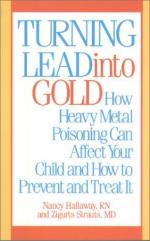|
This section contains 930 words (approx. 4 pages at 300 words per page) |

|
Heavy metals are metallic elements that have a high atomic number and are poisonous to living organisms. Approximately 30 metals have been shown to be poisonous to humans. Examples of heavy metals that are poisonous include mercury, chromium, cadmium, arsenic, and lead. Because they are poisonous, heavy metals are sometimes referred to as toxic metals. Heavy metals may be poisonous on their own or as part of chemical compounds.
It has been known for centuries that certain metals are toxic. For example, Theophratus of Erebus (370-287 B.C.) and Pliny the Elder (A.D. 23-79) both described poisonings that resulted from arsenic and mercury. Other heavy metals, such as cadmium, were not recognized as poisonous until the early nineteenth century.
Heavy metals occur naturally in the environment in rocks and ores. They cycle through the environment by geological and...
|
This section contains 930 words (approx. 4 pages at 300 words per page) |

|


